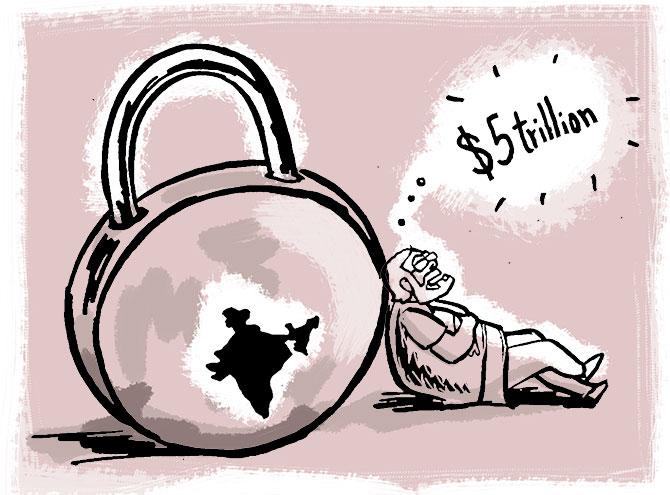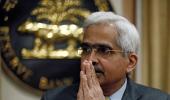It would be a difficult task for the Indian economy to reach the $5-trillion mark a year before the International Monetary Fund (IMF) projection of 2026-27.

Pankaj Chaudhary, minister of state for finance, said in the Rajya Sabha on Tuesday that the government is taking steps to make the country a $5-trillion economy at a date earlier than the IMF’s projection.
In that context, it would not be difficult to meet the projection in the third quarter of FY27.
To meet the IMF's projection, the economy would have to grow 11.33 per cent compounded annually at current prices from 2025-26 onwards.
If the target is to be advanced by a year, the compounded annual growth rate (CAGR) for nominal GDP would be 17.46 per cent for 2025-26 and 2026-27.
It should be noted that the IMF projected India's economy to be worth $5.10 trillion in 2026-27.
This means it would be very close to $5 trillion in the third quarter of that year itself.
India's economy is officially projected to reach Rs 272 trillion, or $3.58 trillion, in the current financial year, going by the second advance estimates.
Here, the exchange rate against the dollar is taken as Rs 75.96, as was assumed by the IMF.
For the next financial year, the economic survey has projected the economy to grow by 6.5 per cent at constant prices under the baseline scenario.
If one adds the Reserve Bank of India's (RBI) projection of 5.3 per cent inflation rate to it, we will get a nominal GDP growth rate of 11.8 per cent
This will take India's economy to Rs 304 trillion, or $3.91 trillion.
Here too the exchange rate is taken as Rs 77.71, as the IMF assumed.
While 17.46 per cent nominal GDP growth may not look difficult, given 18.4 per cent in 2021-22 and projected 15.9 per cent in 2022-23 it should be noted that the first year was on the very low base of contraction of the economy in Covid-hit 2020-21 and the first quarter of the current financial year also had a very low base of the second Covid wave in April-June of 2021-22.
If these two exceptional years are taken out, India's economy grew by a maximum 13.8 per cent in 2012-13 when the new GDP series started.
"In the current circumstances we are likely to grow at a nominal rate between 11 and 11.5 per cent, comprising real growth of 6-6.5 per cent and inflation at about five per cent," said Anil K Sood, professor and co-founder of the Institute for Advanced Studies in Complex Choices.
He said real economic growth can be accelerated without impacting inflation, if the economy invests in growing real wages and earnings through increase in people and capital productivity and value creation.
Madan Sabnavis, chief economist at Bank of Baroda, said it will be hard to achieve a CAGR of 17.5 per cent for FY25 and FY26 to reach the $5-trillion mark earlier.
"This is so because we are talking of controlling inflation more to the region of 5 per cent per annum at a conservative level.... Therefore, we need to be patient and wait for another year before reaching the 5 trillion mark.
"We should make sure that we keep the policy framework updated with incentives to industry to hasten the pace," he said.
ICRA chief economist Aditi Nayar said Indian exports enhancing their market share and a rapid roll out of the government capex could help expedite the timeline of becoming a $five trillion economy.
Pawar said, "Our export businesses must invest to become competitive with China and Vietnam in manufacturing and reduce reliance on export of near-commodity products."
He said the government incentive must be aligned with growth in productivity and value-creation and not production value.
"The current PLI (Production-linked Incentive scheme) encourages lazy manufacturing.
"At the same time, we must invest to automate production of services as reshoring is likely to gather momentum in advanced economies given their compulsion to grow local employment and earnings," he said.
"Minister Chaudhary said some important government measures to boost economic growth include the national infrastructure pipeline of projects, push for capital expenditure, implementation of the PLI scheme, finalisation of the National Monetization Pipeline of public sector assets and formulation of National Logistics policy.
"The Union Budget 2023-24 "further sustains the growth momentum with an increase in capital investment outlay for the third year in a row by 33 per cent to Rs 10 trillion (3.3 per cent of GDP)", said Chaudhary.












 © 2025
© 2025